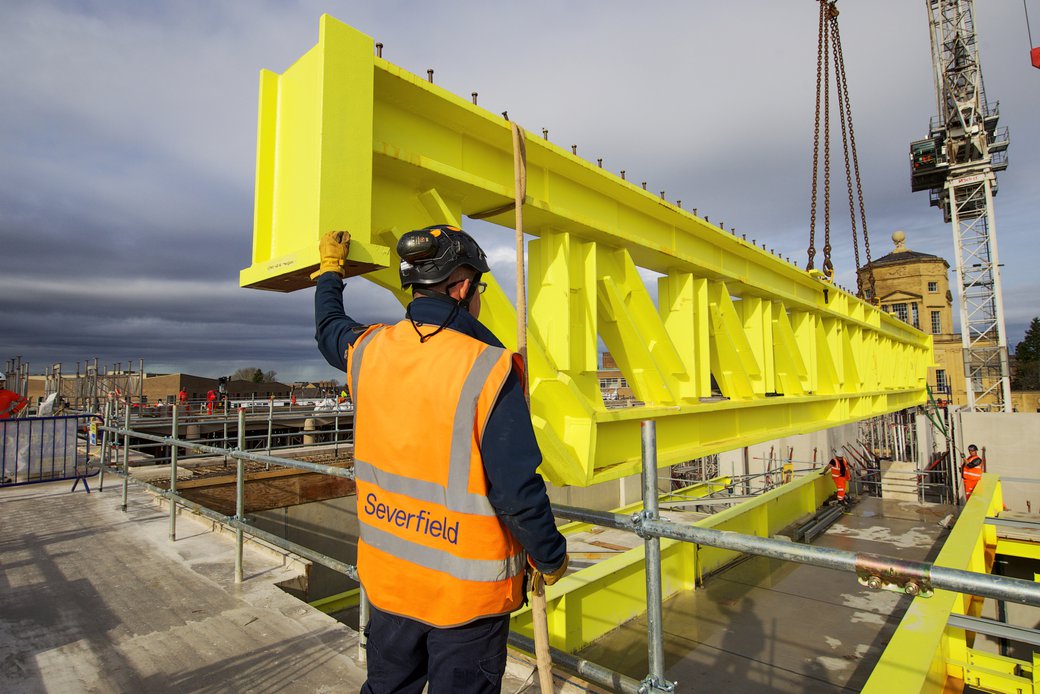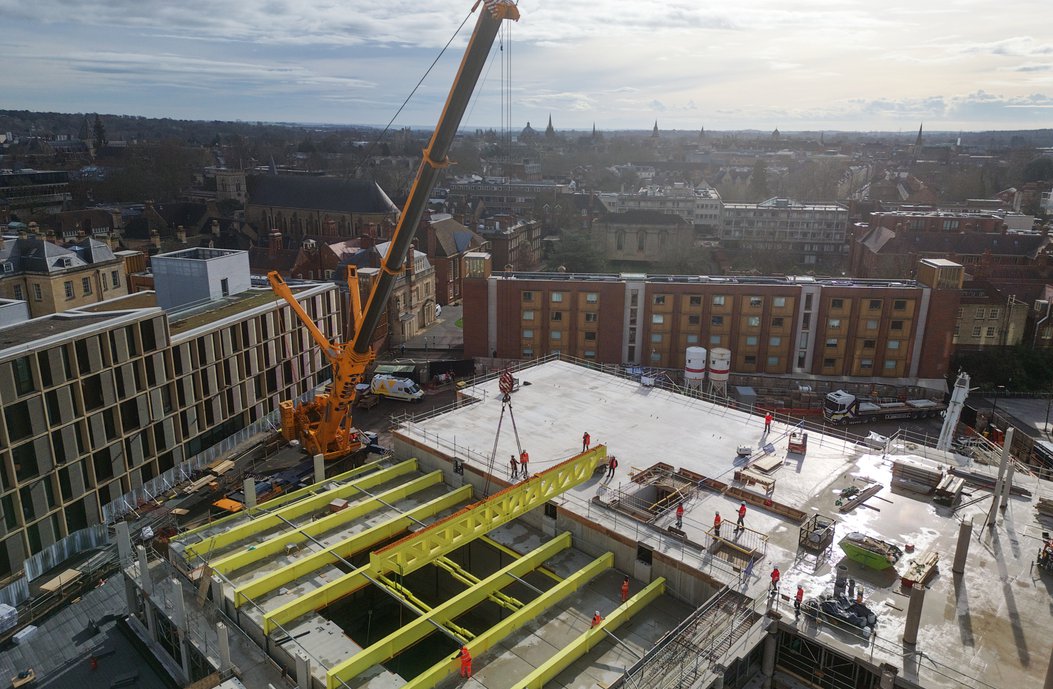Severfield contributed to the design and construction of six distinct and individually supported steel structures that will form the basement level of the new Humanities building at Oxford University. The new building will bring together related faculties and institutions and libraries and collections into one home, including space for a 500-seat concert hall and 250-seat lecture theatre.
- Location
- Oxford University
- Client
- Oxford University
- Main Contractor
- Laing O’Rourke
- Engineer
- AKT II
- Architect
- Hopkins
- Tonnage
- 550
Severfield used the latest Building Information Modeling (BIM) to create a digital plan and description of every aspect of the build at the planning stage. This required close collaboration with various other contractors, engineers, and architects to integrate the information into one model and allow us to identify and resolve potential issues before they happened.
The varied nature of the design relied on the expertise of our group engineering capabilities and meant steel was fabricated at three different sites; including 180 tonnes of larger assemblies at Lostock, 45 tonnes of Fabsec beams at Dalton, and the rest at Carnaby.
Notably, the project required nine large transfer sections, including three 30-tonne trusses and six 12-tonne box girders. Significant planning for movement orders, transport frames, and on-site logistics was crucial to ensure these sections could be maneuvered within the radius of the crane to position the sections.

Each of the spaces had to be planned and installed in phases to suit the steel frame alongside the concrete walls and roof panels to each area involving a significant amount of coordination and engineering between offsite and onsite teams.
Throughout the project, significant measures were taken to minimise waste and promote sustainability. The project employed a temporary works scheme, utilising standard components where possible to avoid fabricated materials. This approach not only supports resource efficiency but also complimented the client’s drive to achieve Passivhaus certification.
Upon completion of the basement levels and the placement of concrete slabs at ground level, the project will progress with the construction of a concrete frame and structure spanning four levels. Our return in April 2024 marked the installation of the steel for the roof plant room, contributing to the overall development of the project.




